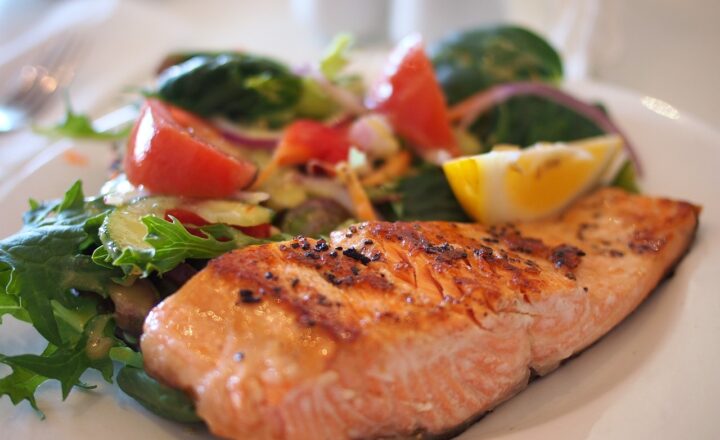Why Eating Sea Cucumbers Is a Delicacy and Other Strange Seafood Habits
November 13, 2024

Sea cucumbers may seem like an unusual delicacy, but their culinary significance stretches across various cultures and cuisines. Whether prepared in soup, stir-fried, or braised, these marine creatures are revered not only for their unique flavor but also for their health benefits. In this article, we explore why sea cucumbers are considered a gourmet delight, delve into their rich history, and examine other fascinating seafood practices around the world.
1. Understanding Sea Cucumbers
Sea cucumbers belong to the class Holothuroidea, which are soft-bodied echinoderms found on the ocean floor. Unlike cucumbers from a garden, these marine animals can come in various shapes and sizes, often resembling elongated sausages or wrinkled tubes. Of the roughly 1,250 species, approximately 30 are harvested for culinary purposes, with the most sought-after being from the coasts of Asia.
Nutritional Benefits
Sea cucumbers are known for their nutritional profile. They are:
- Low in calories but high in protein, offering a valuable source of nutrition for those seeking healthy options.
- Rich in vitamins and minerals, including Vitamin A, B vitamins, magnesium, and iron, which are essential for maintaining good health.
- Packed with antioxidants that support bodily functions and potentially reduce chronic disease risk.
From a culinary standpoint, sea cucumbers are praised for their unique texture, often described as slightly chewy yet tender when cooked. This makes them a popular choice in soups and stir-fried dishes.
2. A Cultural Culinary Tradition
In various cultures, sea cucumbers hold significant cultural and culinary meaning. They are often regarded as luxury food items and treated as a delicacy in Asian cuisine.
In Asian Cuisine
In countries such as China, Japan, and Korea, sea cucumbers are prized for their health benefits and rich flavor. They are used in traditional dishes, especially during festivals or special occasions.
For instance, in Chinese cuisine, braised sea cucumber is often served during weddings because it symbolizes auspiciousness and wealth. Moreover, in Japan, sea cucumbers can be enjoyed raw as sashimi or added to hot pots, enhancing the flavor profile.
In Other Cultures
While sea cucumbers are often associated with Asian gastronomy, other cultures around the world have unique approaches to preparing and consuming seafood:
- Scandinavian Cuisine: In Nordic countries, fermented fish and seafood are staples. Surströmming, or fermented herring, is notorious for its pungent aroma and is a traditional dish often accompanied by thin flatbreads and potatoes.
- Andean Cuisine: In Peru, ceviche is a beloved dish made from fresh raw fish marinated in citrus juices. Unique seafood like octopus, scallops, and even conch can often find their way into ceviche variations, showcasing local flavors.
- Mediterranean Cuisine: Countries bordering the Mediterranean Sea, such as Italy and Greece, favor mollusks like octopus and cuttlefish. Dishes often include grilled octopus drizzled with olive oil and lemon, representing the simplicity and freshness of coastal ingredients.
3. The Processing and Preparation of Sea Cucumbers
Before sea cucumbers find their way to your plate, they undergone unique processes to ensure they can be safely consumed. These creatures are typically dried, rehydrated, and then incorporated into dishes.
Drying Process
The drying method is crucial in preserving the sea cucumber’s flavor and texture. Once harvested, the sea cucumbers are thoroughly cleaned, boiled to ensure safety, and then dried under the sun or in special drying machines. The dried sea cucumbers, when soaked in water, expand back to their original size and shape, allowing them to be prepared in various dishes.
Cooking Methods
Common cooking methods for sea cucumbers include:
- Braised: Cooked slowly in soy sauce, garlic, and ginger, offering a rich flavor that complements the delicacy of the sea cucumber.
- Stir-fried: Quickly cooked with seasonal vegetables and sauces, retaining the sea cucumber’s unique texture while bringing out its flavor.
- Soup: Often used in hot soups, sea cucumbers absorb flavors and provide a rich, flavorful broth.
The combination of these processes ensures that sea cucumbers maintain their nutritional value while showcasing their culinary versatility.
4. Controversies Surrounding Seafood Practices
Despite sea cucumbers’ culinary acclaim, there are controversies surrounding their harvest and consumption. Unsustainable fishing practices have threatened some sea cucumber populations worldwide.
As these creatures play vital roles in their ecosystems, overharvesting can result in ecological imbalances. Additionally, the black market trade has exacerbated the issue, pushing for stricter regulations in many countries.
Consumers are encouraged to source sea cucumbers and other seafood from reputable fisheries committed to sustainable practices. This ensures that future generations can continue to enjoy these delightful marine delicacies without jeopardizing their existence.
5. Acceptance of Uncommon Seafood Habits
Beyond sea cucumbers, several other seafood habits might seem strange to some but are seen as delicacies in their respective cultures:
- Raw Fish: Consuming raw fish is common in numerous cultures, particularly in sushi and sashimi traditions in Japan. The freshness of the fish is paramount, requiring strict handling and storage protocols to minimize health risks.
- Insects: In some Asian countries, certain insects like fried crickets or silkworm larvae are indeed considered seafood and are consumed as protein-rich snacks.
- Fish Eyes: Consumed in various cultures, the eyes of certain fish are delicacies, prized for their rich flavor. In regions like Iceland, fish eyes are often eaten as a treat by children.
The willingness to embrace diverse seafood habits reflects cultural significance and culinary traditions that continue to evolve.
Conclusion
Eating sea cucumbers represents just a fraction of the diverse seafood practices enjoyed around the globe. From their rich nutritional content to cultural significance, these unique marine creatures highlight how food preferences vary widely among cultures. By considering the sustainability of seafood practices and embracing various culinary traditions, we can appreciate the incredible flavors of the ocean while preserving its delicate ecosystems for future generations.
Embarking on an exploration of unusual seafood habits can enrich our understanding of global cuisines and encourage adventurous eating experiences.








